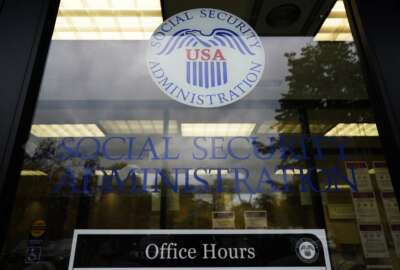DHS readies new tools to combat cyber attacks
Secretary Janet Napolitano said the Einstein 3 software will be deployed across the government to detect and disrupt malicious cyber activity. Cybersecurity amo...
By speech at the George Washington University’s Homeland Security Policy Institute in Washington that DHS would finish development of and begin deploying Einstein 3 in 2011.
Einstein 3 “will provide DHS with the ability to automatically detect and disrupt malicious cyber activity,” she said.
DHS said in September it planned to finish deploying version 2 of the software on agency networks in 2011 and has been testing different technologies, including those the Defense Department is using, to include in Einstein 3.
“[W]e’ve increased our capacity to fight cyber crimes and cyber terrorism, opening a new 24/7 watch and warning center, and testing our country’s first national-level cyber incident response plan, while increasing our stable of cyber experts by some 500 percent,” she said referring to the department’s accomplishments over the last two years. “We entered into a historic agreement with the Department of Defense and National Security Agency to detail the division of labor among our organizations.”
Napolitano said cybersecurity was one of the major priority areas for DHS over the next year. Her speech was the first of what she said will be an annual State of Homeland Security discussion.
“I can report that our young department has matured, building on the good work of my two predecessors, Tom Ridge and Michael Chertoff,” she said. “I can also report that our homeland is more secure that it was 10 years ago, and, indeed, more secure than it was two years ago.”
And Napolitano said DHS is taking several steps to make the homeland even more secure.
First, DHS will scrap the color-coded terrorism threat alert system for a new two-tiered approach.
DHS will focus the new National Terrorism Advisory System on providing information about real or credible potential threats.
“When we have information about a specific, credible threat, we will issue a formal alert providing as much information as we can,” she said. “Depending on the nature of the threat, the alert may be limited to a particular audience, like law enforcement, or a segment of the private sector, like shopping malls or hotels. Or, the alert may be issued more broadly to the American people, distributed – through a statement from DHS – by the news media and social media channels.”
She said the alerts will be specific to the threat, recommend certain actions, or suggest looking for specific suspicious behaviors, and they will have a specified end date.
Many of these changes are in response to the criticisms of the current color-coded system.
“Though the system served a valuable purpose in the terrible days and months following the terrorist attacks of Sept 11th, it was clearly time for the current color-coded system to be replaced with a more targeted system,” said Rep. Peter King (R-N.Y.), chairman of the Homeland Security Committee, in a statement. “I know they have been working on this for a long time. It sounds to me like the changes they are proposing make sense. We will have to wait and see how they implement this new, more targeted system. I expect the biggest challenge for DHS will be balancing the need to provide useful and timely information with the need to protect sensitive information.”
Committee ranking member Rep. Bennie Thompson (D-Miss.) said the old system causes Americans to be scared, not prepared.
“Each and every time the threat level was raised, very rarely did the public know the reason, how to proceed, or for how long to be on alert,” he said in a statement. “I have raised concerns for years about the effectiveness of the system and have cited the need for improvements and transparency.”
A multi-agency, cross-government task force created the new system and it brings together data from a host of different federal agencies.
“It was largely the work of a bipartisan task force that included law enforcement, former mayors and governors, and members of the previous administration,” Napolitano said.
DHS will begin a 90-day implementation of the new alert system with a goal of full implementation by the end April.
Napolitano said DHS will expand or introduce several other programs over the next year.
She said the federal government signed an agreement with the World Customs Organization and 60 other nations called Project Global Shield to better protect the global supply chain. She said the initiative aims to prevent the theft of chemicals used to make bombs and identifies other vulnerable areas such as transportation hubs around the world.
Along those same lines, DHS also will work with the private sector and international partners to expand and integrate “trusted traveler” and “trusted shipper” programs that facilitate legitimate travel and trade while enhancing security.
Napolitano also wants to make sure that the workers inspecting those products coming into the country are not security risks themselves. She said DHS will expand the Transportation Worker Identity Credential (TWIC) program to more ports of entry and maritime workers. And along those same lines, she says DHS will launch the Chemical Facility Anti-Terrorism Standards Personnel Surety Program, requiring high-risk chemical facilities to vet individuals with access against the Terrorist Screening Database.
She said all of this is dependent on how well the agency shares information.
To that end, she said DHS centered information sharing responsibility in the Intelligence and Analysis Directorate.
“Our real value added to this while enterprise is making sure that intelligence is analyzed and turned around and disseminated to meet operational needs and to state and locals as well,” she said. “We have been working very hard with the FBI to improve our ability to turn around products and get things out in a timely fashion. That is somewhat new.”
She said DHS will follow up this year with state and local law enforcement agencies to make sure the information the agency is providing is useful and figure out what it is being used for.
“Information sharing is an art and not a science,” she said. “Someone’s absolutely necessary information is someone else’s ‘why are they sending me this?'”
And finally, she made a pitch for recruiting the next generation of homeland security workers. Napolitano gave the speech at George Washington University in Washington and asked the students to consider a career in government, specifically DHS.
She says DHS will hire more than 2,000 veterans over the next year, and have plans to hire several hundred more cybersecurity professionals over the next year.
(Copyright 2011 by FederalNewsRadio.com. All Rights Reserved.)
Copyright © 2024 Federal News Network. All rights reserved. This website is not intended for users located within the European Economic Area.





